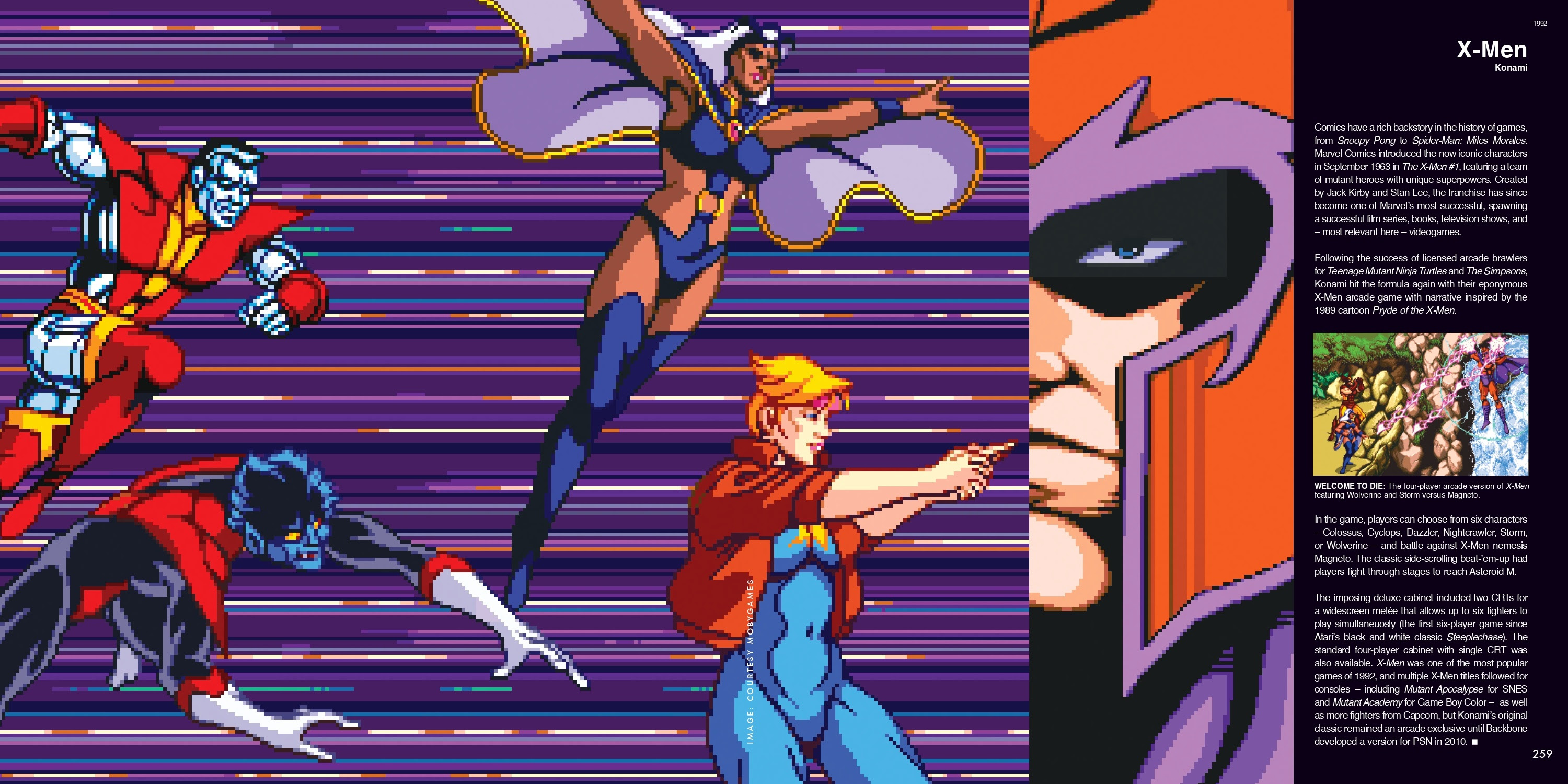Today videogames are arguably one of the dominant forms of media and art, with the global industry generating nearly $200 billion in sales each year. Younger and older people of all backgrounds are playing games of diverse types and on countless platforms. Videogames have gone through many evolutions to get to this point, and Dynamite Entertainment is proud to present the all-new coffee table book Supercade: A Visual History of the Videogame Age 1985-2001 to cover one of the most pivotal eras in their story. This hotly anticipated tome is an insightful and indispensable read for gamers of all ages, releasing in February.
Writer and curator Van Burnham has lovingly crafted this 500-plus page tribute to everyone’s favorite games and hardware of the time period, with high quality screenshots and photographs joined by research and commentary on the significance of each entry to the industry at large and those gamers who played them. This book follows a previous volume covering the time span of 1971-1984. That era was the initial explosion of the medium, especially in the homes of families with releases from Atari and others. But due to various complicated factors, the industry infamously crashed around 1983. This new release covers the era many today will be most familiar and nostalgic about.
When asked about the inspiration for the book, Burnham said, “After the original Supercade was released, I was asked by readers and game fans when I’d do a sequel and I honestly didn’t feel it was important until now. The next generation of gamers have since come of age, raised in the aftermath of the crash, and over the past two decades they’ve expressed a passion for the games of their youth — Street Fighter, Space Harrier, and Super Mario — which are now equally, if not more relevant than the games of the golden age.”


1985 saw the release of the Nintendo Entertainment System (NES) in the United States, the iconic Japanese company’s first foray into home video games overseas. With massively successful titles and viral marketing, franchises like Super Mario Bros., Donkey Kong, The Legend of Zelda, Metroid, and more inspired a new generation to draw maps, share secrets (real or not) on the playground, and rush home to get to the next level. A wave of third party developers like Capcom, Konami, Tecmo, and others added to the growing library of favorites with the likes of Mega Man, Castlevania, Contra, Final Fantasy, and licensed released from so many popular films, TV shows, board games, comic books, and beyond. Nintendo’s surging success saved the gaming industry and began building toward what fans recognize today.
Nintendo was not alone through this period though, as it quickly saw competitors in Sega’s Genesis, which came flying in with Sonic the Hedgehog, claiming that it could do what “Nintendon’t.” Over the almost 20 years covered in this book, Nintendo and Sega would continue duking it out. Along the way they would be joined by fellow Japanese electronics giant Sony with their PlayStation brand, the next major American heavy hitter with Microsoft’s Xbox, and more. Also delved into in Supercade are Nintendo’s subsequent Super Nintendo Entertainment System (SNES), Nintendo 64, and GameCube. In addition to the Genesis, Sega’s Master System, Saturn, and Dreamcast are covered (plus the Sega-CD and 32X). Sony’s first two PlayStations are chronicled. Handheld devices such as the Game Boy and Game Gear are also included. Other platforms along the road include Atari’s Jaguar, the TurboGrafx-16, and others. The continuing success and latter days of the arcades and the dramatic shifts in PC gaming are also touched on.
To cover the innovative and enduring movements, technologies, and new genres of the era, Burnham interviewed luminaries like John Romero (Doom, Quake), Tim Schafer (Monkey Island, Grim Fandango), Warren Spector (Deus Ex, Ultima), Eugene Jarvis, Richard Garriott, and more. Names like these were responsible for advancements like fighting games, graphical adventures, real-time strategy, immersive sims, first-person shooters, and the transitions and breakthroughs brought on by 3D graphics.
In addition to Van Burnham in charge, she has brought in an extensive list of contributors, with varying expertise and insight. Tim Lapetino, of Dynamite’s The Art of Atari joins on. Additional writers include Ian Bogost, Jeremy Parish, Nathan Altice, Max Blackley, Chris Charla, Brian Crecente, Gabe Durham, Benj Edwards, Scott Fontana, Paul Ford, Darren Gladstone, Raiford Guins, Blake J Harris, Robin Hunicke, Roland Ingram, Alex Kane, Chris Kohler, Kelsey Lewin, Henry Lowood, Chris Melissinos, Mike Mika, Jess Morrissette, Chris Moyse, Laine Nooney, Chris Priestman, Chris Schilling, Brandon Sheffield, Dean Takahashi, Tony Temple, Tom Vanderbilt, Brittany Vincent, John Wills, and Erik Wolpaw.
The book is a 10 by 10 inches paperback with deluxe features including gatefolds, inserts, metallic inks, and more in addition to the luscious product photography, optimal definition screenshots, and meticulous design

